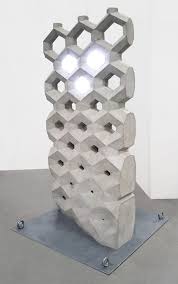
Market Forecast Report on Smart Concrete Market 2016-2024
Global Smart Concrete Market: Overview
Smart concrete technology is a new alternative method for monitoring the health of reinforced concrete structures. It was developed Dr. Deborah D.L. Chung from State University of New York at Buffalo, U.S. The unique perceived benefit of smart concrete is that it is fortified by carbon fiber, which comprises as much as 0.2% to 0.5% of the volume. It can detect stress or strain in concrete structures before it gets too late. The smart concrete technology has undergone extensive laboratory testing, but is yet to hit the market.
Request Brochure:
https://www.transparencymarketresearch.com/sample/sample.php?flag=B&rep_id=17720
It works by adding a small quantity of short carbon fiber to concrete with a conventional concrete mixer to modify the electrical resistance of concrete in response to strain or stress. As a result, the contact between the fiber and cement matrix is impacted when the concrete is deformed or stressed, thereby affecting the volume electrical resistivity of the concrete. The strain is then uncovered by measuring the degree of electrical resistance. Smart concrete is capable of sensing miniscule structural flaws before they become substantial and hence find application in checking the internal condition of structures, particularly after an earthquake.
In the report, Transparency Market Research provides a detailed analysis of the potential of the global smart concrete market. The report analyzes the different potential market drivers and restraints by gathering inputs from various people having in-depth knowledge of the technology.
More Trending Reports by TMR:
Global Smart Concrete Market: Trends and Opportunities
One factor slated to contribute to the global smart concrete market is the widespread use of concrete as a composite material for various types of structures and its inability to withstand tension, resulting in cracks easily. This necessitates monitoring them for cracks so as to prevent them from getting worse by timely repair. This, in turn, helps to ensure safety and durability of various structures. Other methods to evaluate cracks are by attaching or embedding sensors into structures. Sensors, however, cost more to install. Smart concrete is relatively cheaper. This is another factor that would likely drive its market.
The supercharged growth in the smart buildings market in the upcoming years would also help in the quick uptake of smart concrete. This is because in addition to their basic functionality of detecting minor cracks, smart concrete also helps to arrest the progress of cracks in conventional concrete and reinforce them to make them stronger. Further, it takes a lot of force for smart concrete to bend, and it soaks more energy before fracture. Smart concrete can also have application in building highways for they would help in weighting vehicles plying on them. A highway constructed using smart concrete would be able to detect the position, weight, and speed of vehicles.
Buy Now:
https://www.transparencymarketresearch.com/checkout.php?rep_id=17720<ype=S
Global Smart Concrete Market: Regional Outlook
The report studies the potential market for smart concrete by segmenting it based upon geography and then attempts to gauge the opportunity in each region. Advanced economies in North America and Europe, which have been at the forefront of adopting latest technologies, would likely emerge as prominent markets for smart concrete. Asia Pacific, powered by densely populated, emerging economies such as China and India where construction activities are being conducted full-throttle, also spells solid potential.
Companies Mentioned in Report
To present an in-depth assessment of the potential competition in the smart concrete market, the report attempts to gauge the strategies that would be adopted by players wanting to foray into the market. Leading companies operating in the global concrete and cement market would likely lap up the opportunity presented by the new technology to further enhance their product offerings.
This study by TMR is all-encompassing framework of the dynamics of the market. It mainly comprises critical assessment of consumers’ or customers’ journeys, current and emerging avenues, and strategic framework to enable CXOs take effective decisions.
Our key underpinning is the 4-Quadrant Framework EIRS that offers detailed visualization of four elements:
- Customer Experience Maps
- Insights and Tools based on data-driven research
- Actionable Results to meet all the business priorities
- Strategic Frameworks to boost the growth journey
The study strives to evaluate the current and future growth prospects, untapped avenues, factors shaping their revenue potential, and demand and consumption patterns in the global market by breaking it into region-wise assessment.

